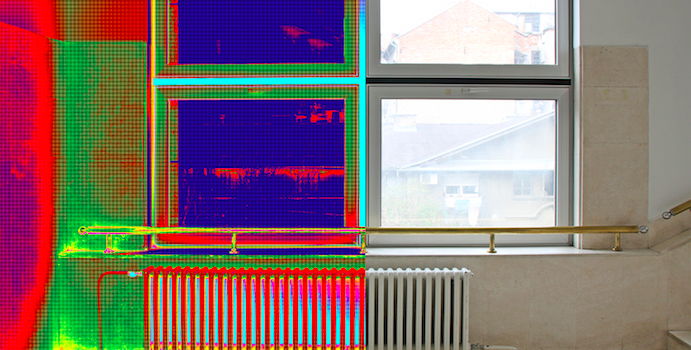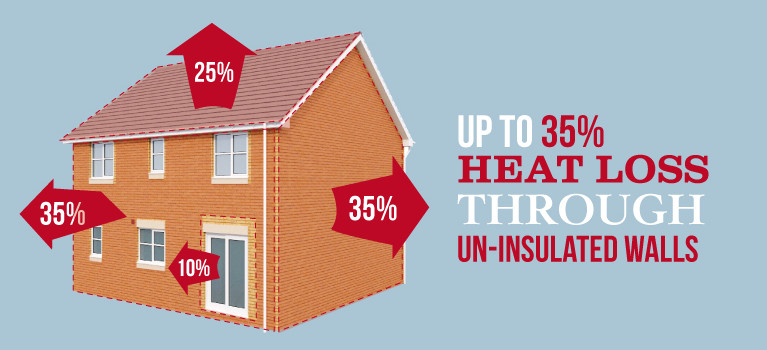
What exactly is thermal imaging? And what is it used for?
Originally developed for military use with the invention of heat seeking missiles in the 1960s, thermal imaging translates thermal energy (heat) into visible light in order to analyse heat transfer. It is now often used to identify the thermal performance of properties. The warmest parts of the building will show as white, yellow or red. The coldest will be purple, dark blue or black.
You would expect to see some heat escaping from doors and windows, but big leaks from other places could be worrying. Walls, for instance; you can use thermal imaging to see inside walls and check there are no holes in cavity wall insulation. If you have solid walls, you will probably see them leaking heat, and this could be a reason to start thinking about solutions such as external wall insulation.
The fact that heat rises means 25% of heat is normally lost through the roof; thermal imaging will probably highlight this. It is important to insulate your loft space to slow this transfer.Thermal imaging can also be used to identify roofing leaks, because at night any moisture will stand out as dark spots. Identify these problems and you’re halfway to finding a solution.
Thermal imaging is also an easy way to check that any improvements you’ve made are working. You can see if a contractor has done a good job at installing insulation by the colours shown up in a survey. There’s no cheating it – the results are clear for anyone to see.
 Can I use thermal imaging myself?
Can I use thermal imaging myself?
You can buy your own camera – but it’ll set you back thousands of pounds. Obviously, if you can find one to borrow it’s worth doing, as it’s probably not something you’ll use every day! As a starting point, you can actually get one that just plugs into your smartphone. These start at just under £200.
Think we missed something? Do you have a different opinion?
Comment below to get your voice heard…












No Comments yet! Be the first one.